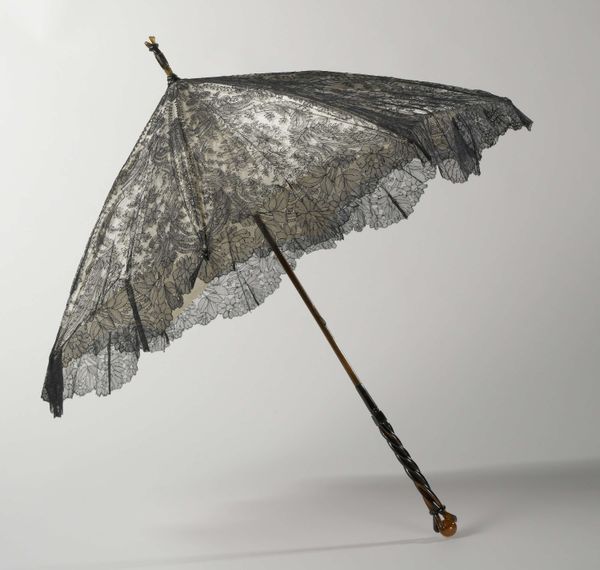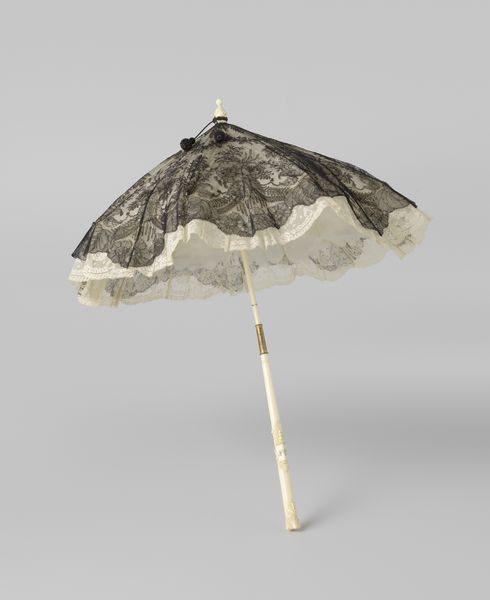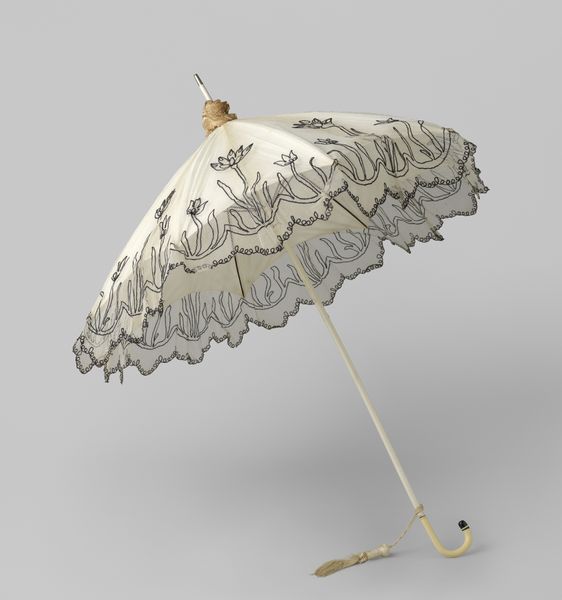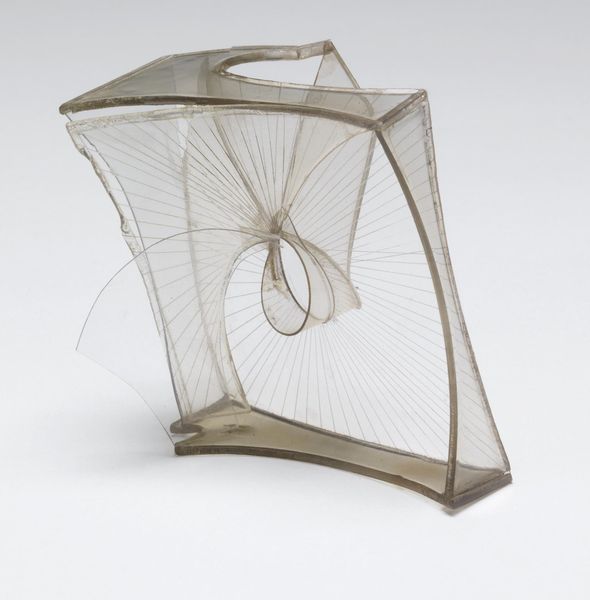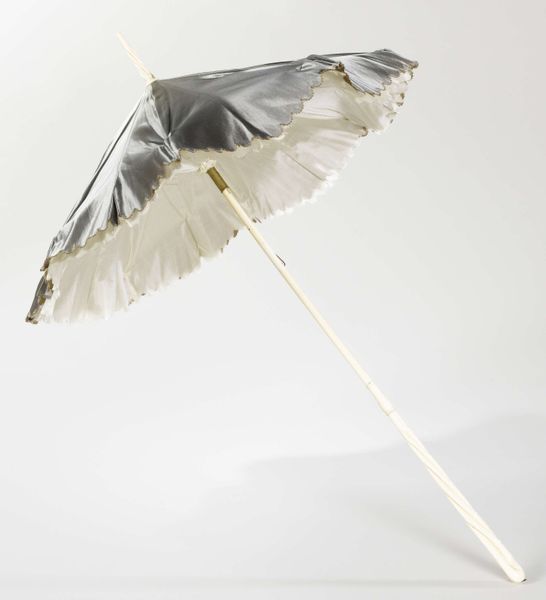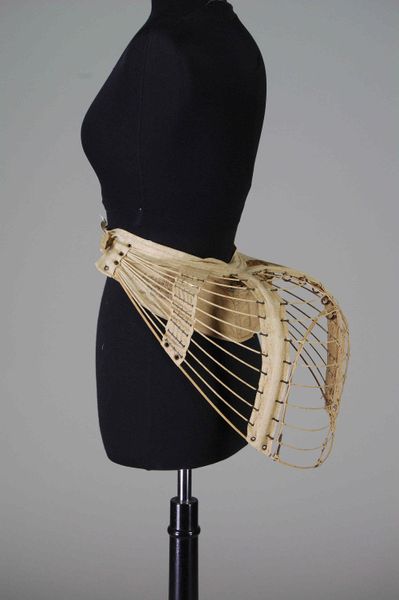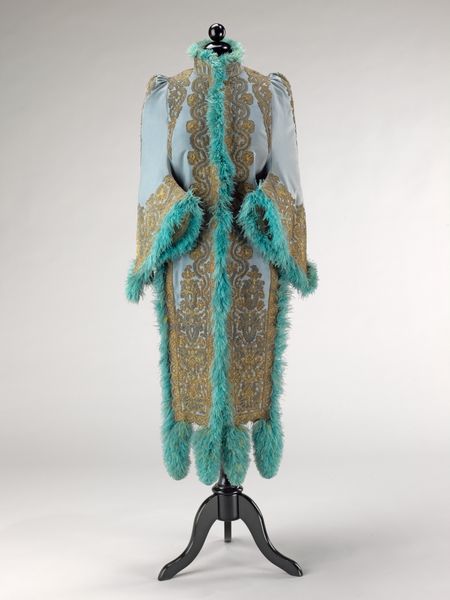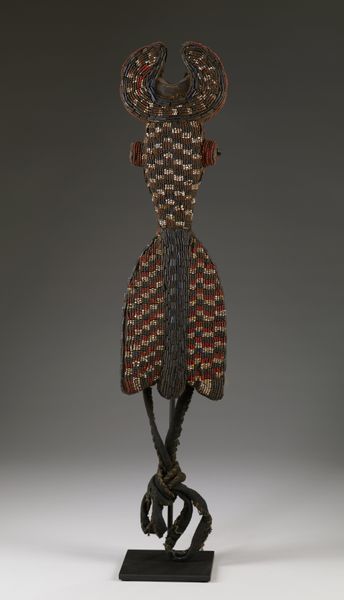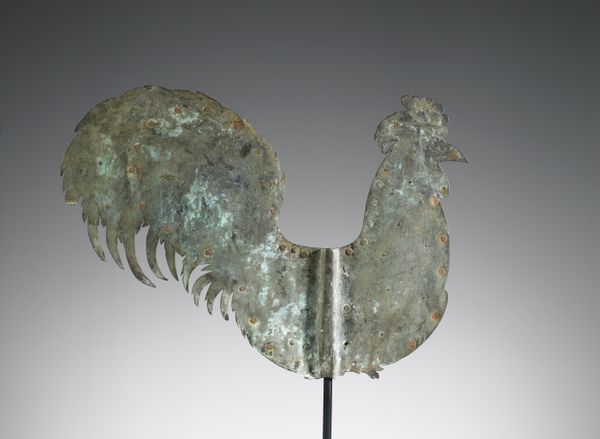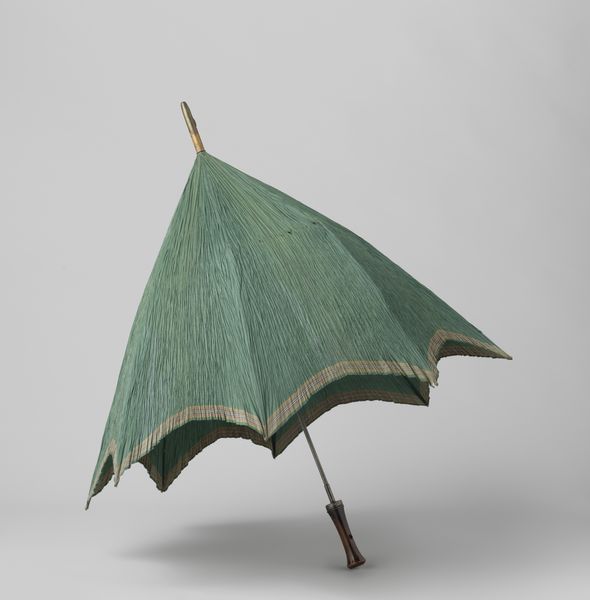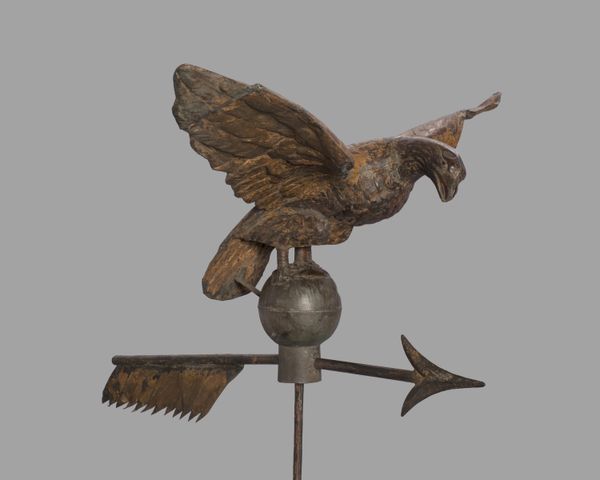
Copyright: Public Domain
Editor: This delicate silk parasol, crafted between 1860 and 1865, just exudes Victorian elegance! The intricate floral lace is stunning. What historical narratives do you think this seemingly simple object whispers about its era? Curator: It speaks volumes about the societal constraints and ideals of beauty placed upon women of the time. The parasol wasn't merely a sunshade; it was a statement. Think about the social function of museums acquiring such objects: does it further a "fancy picture" of Romanticism? Editor: That's interesting. How so? Curator: Pale skin was prized as a sign of status, indicating a life of leisure indoors, shielded from the sun's "tanning" rays which were associated with outdoor labor. This parasol, more than protection, becomes a symbol of social stratification and controlled visibility. Editor: So it's not just a pretty accessory; it’s a tool in constructing and maintaining a social hierarchy? Did its materiality, the silk and lace, also play a role? Curator: Precisely. Silk and lace were luxury fabrics, accessible only to certain classes. Consider too how such delicate items reinforced ideas of female fragility and dependence. Do you think that museums display objects like this critically or simply to evoke a past era? Editor: That makes me think about the labor involved in making lace at that time as well. We see the object, but not necessarily the conditions under which it was made. Thanks, it gives me a whole new perspective on something I initially saw as simply beautiful. Curator: Museums ideally should engage critically with how the art has a public role of socio-political impact on the art and viewers. It shows us how decorative art could have meaning deeper than pretty surfaces.
Comments
No comments
Be the first to comment and join the conversation on the ultimate creative platform.
